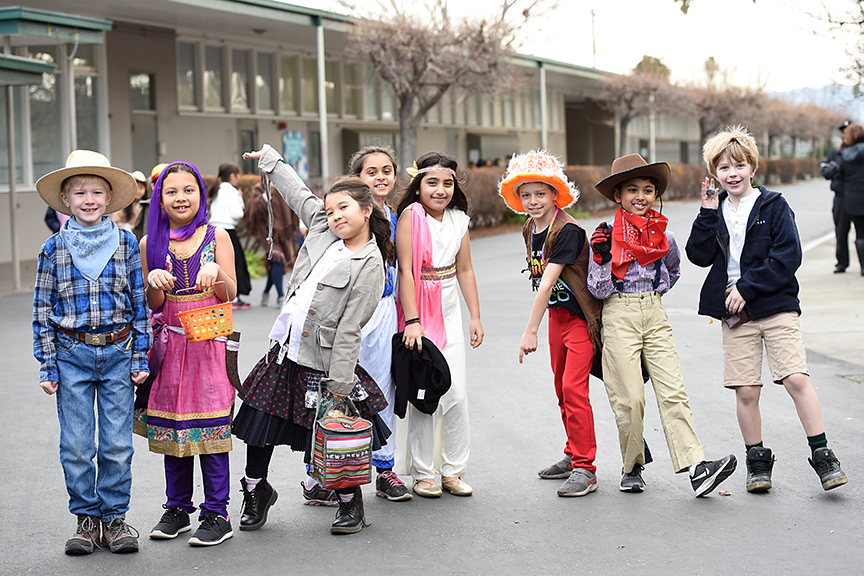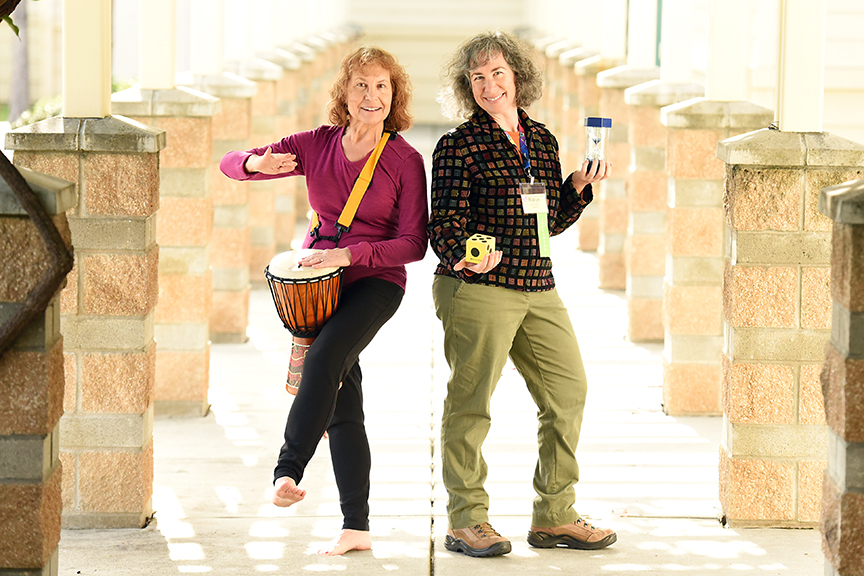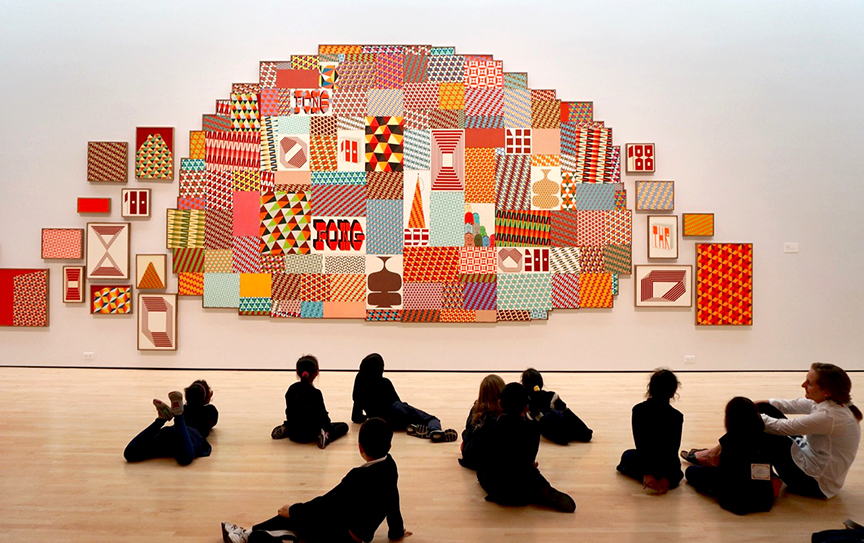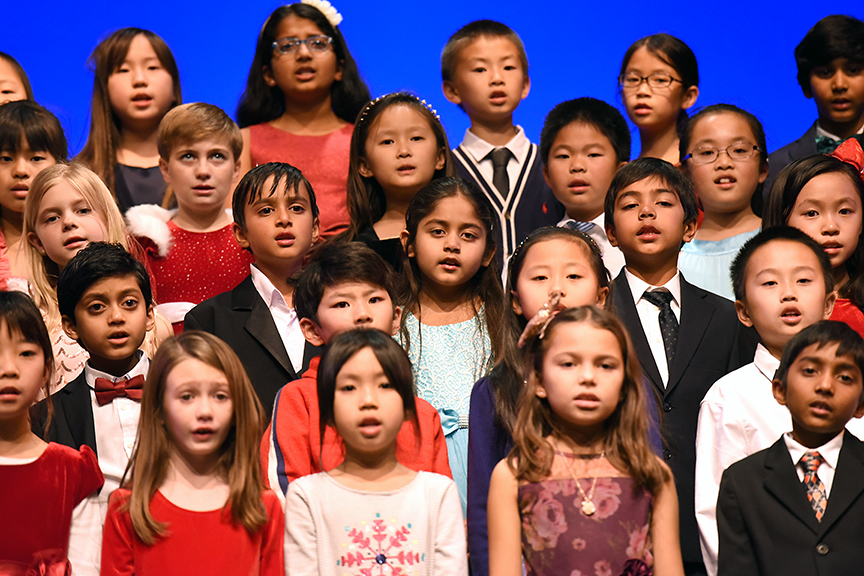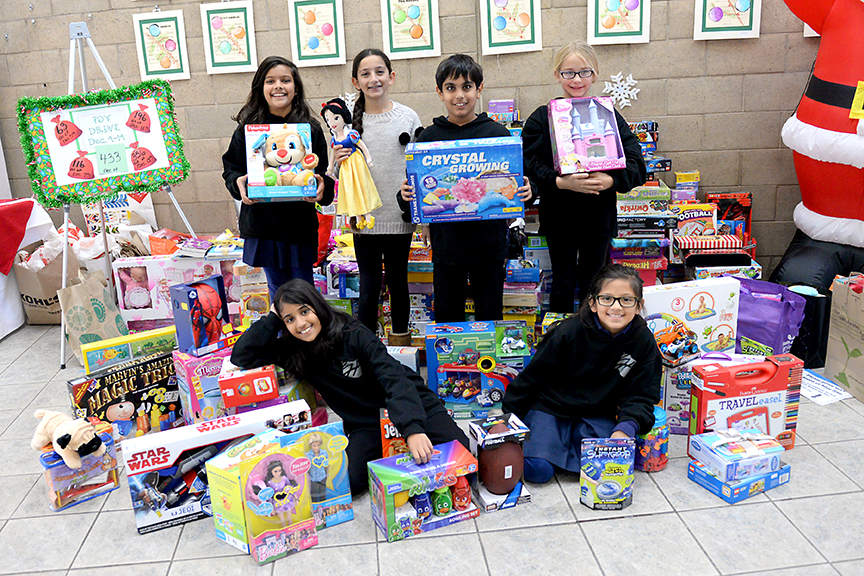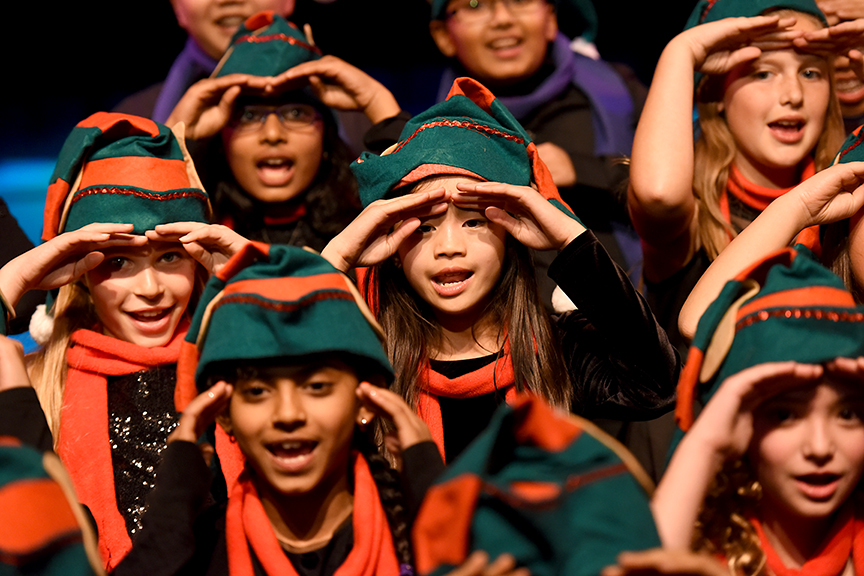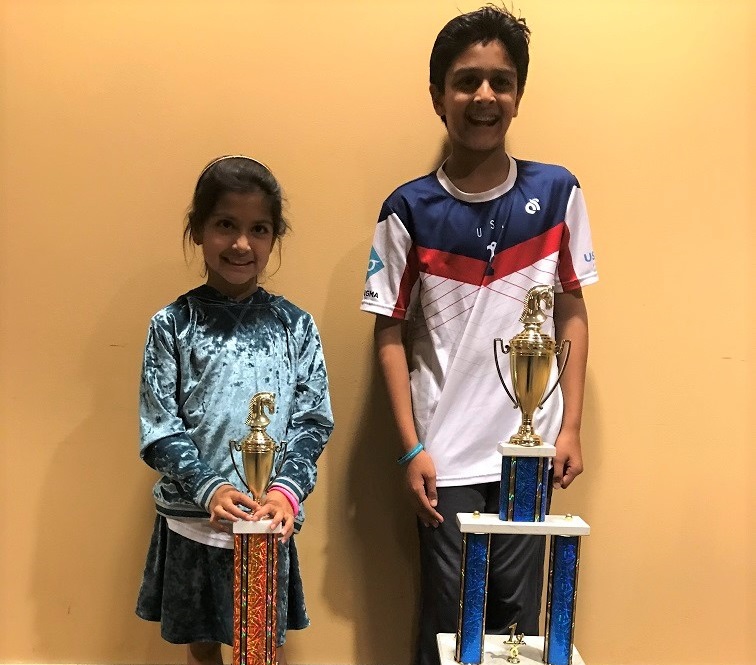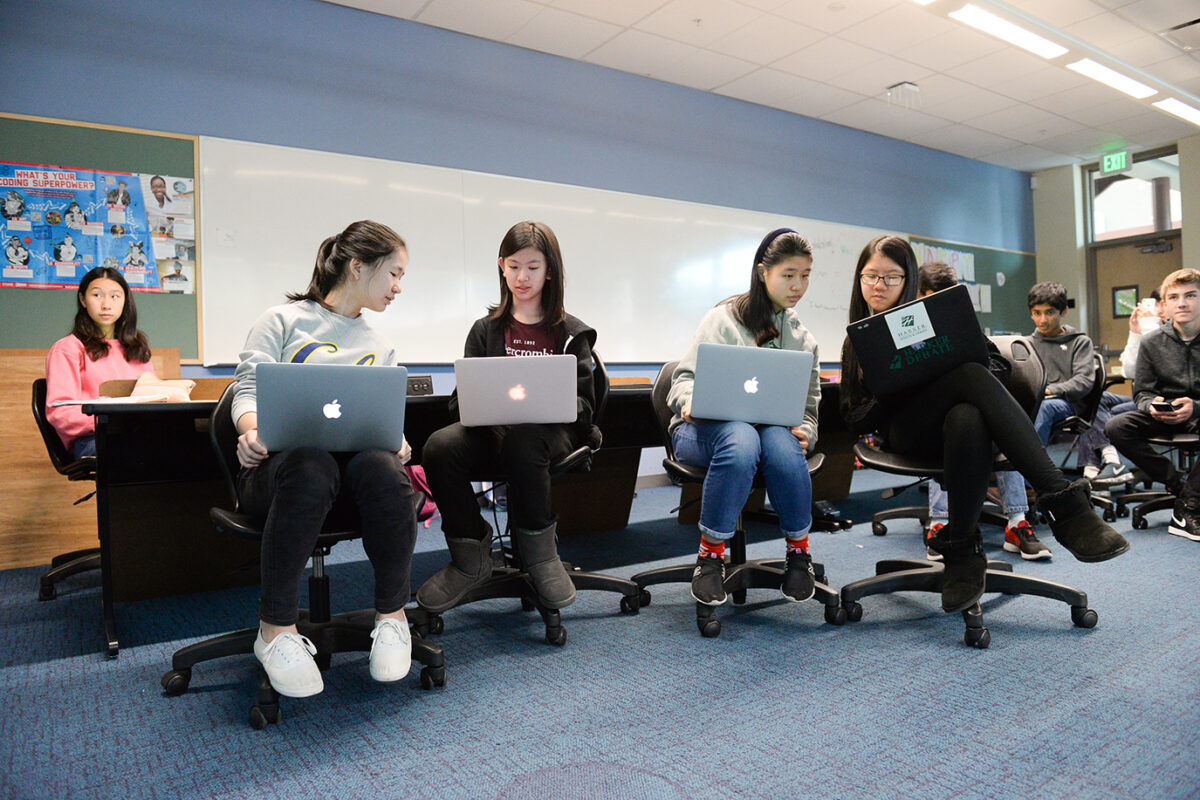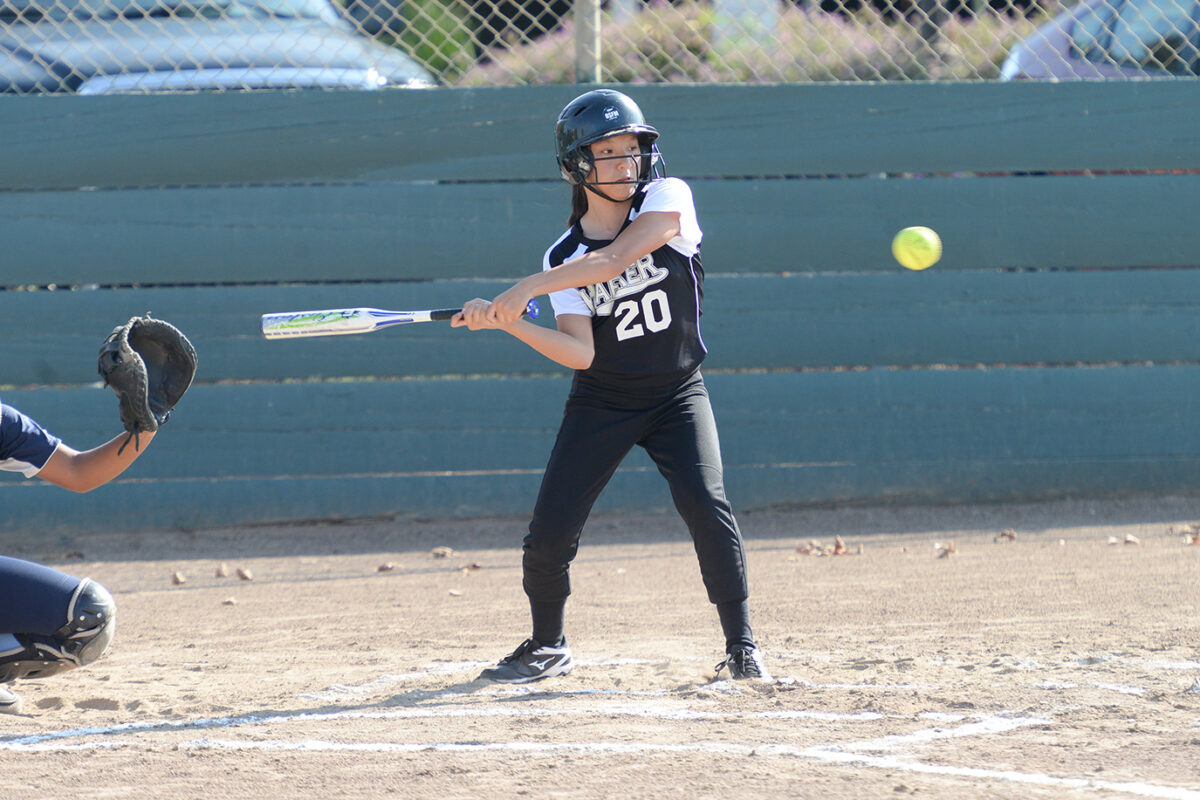Grade 3 students celebrated Dress for History Day by wearing costumes inspired by modes of dress from different cultures from various historical periods. Costumes included miners, hippies and Civil War veterans.
Lower School
Harker Preschool specialists speak at annual kindergarten conference
Two Harker Preschool teachers recently attended the California Kindergarten Association’s annual conference in Santa Clara.
Grade 1 students take cultural journey through Cantor Arts Center
Grade 1 students visited the Cantor Arts Center at Stanford University for an up-close look at works from various periods including Auguste Rodin’s famous sculpture “The Thinker.”
Grades 1-3 holiday shows bring seasonal cheer as community heads into winter break
Prior to break, grades 1-3 staged their annual holiday shows at the Bucknall Theater to celebrate the season.
Grade 4 toy drive delivers more than 400 toys to families in need
The grade 4 holiday toy drive came to a successful end as students delivered 435 toys to St. Justin’s Community Ministry in Santa Clara
Lower school musicians perform at Winter Concert
The Lower School Winter Concert on Dec. 7 brought together lower school instrumental and vocal groups –check out the photos!
Chess enthusiasts successful in multiple recent events
Lower school chess champs Omya and Vyom Vidyarthi (grade 2 and 5, respectively) have done it again! At the 2017 CalChess Grade Level Championship…
Creating tomorrow’s innovators: Harker inspires with deep computer science offerings
This article originally appeared in the winter 2017 issue of Harker Magazine. By João-Pierre S. Ruth Recently, a computer science instructor at Stanford asked students in…
In the News: November 2017
Each month, Harker notes news stories that include Harker. Here is the November line up! Great write up on an incredible effort! http://www.mercurynews.com/2017/08/31/saratoga-teen-wins-50000-for-creation-of-medical-app Harker’s…
Lower and middle school fall sports: League title, some first places, and awards and accomplishments
Middle school athletes had a great season, check it out!
